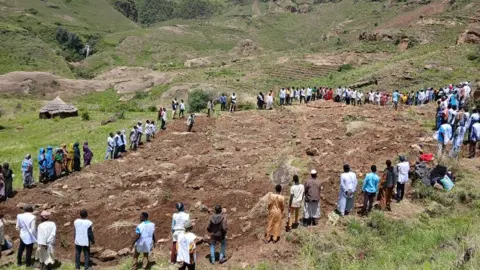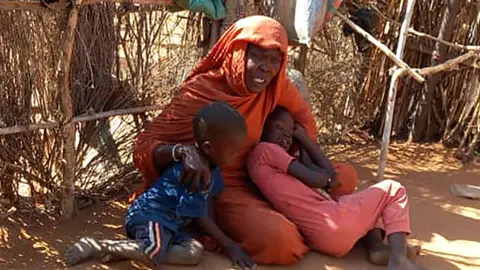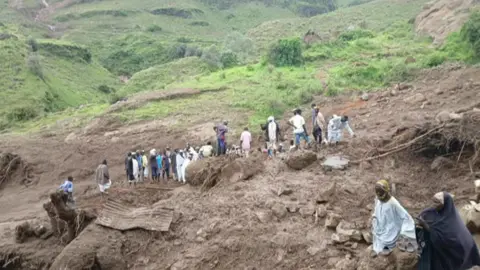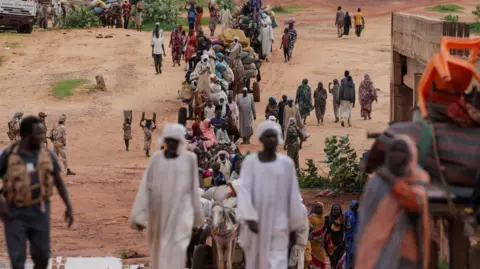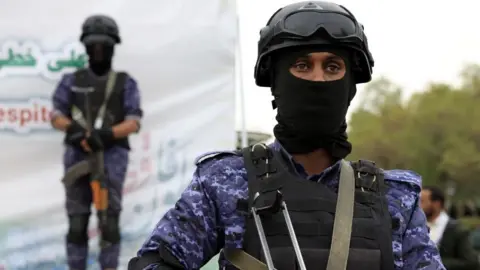In recent years, the fashion world has seen a remarkable influx of models from South Sudan, a country grappling with ongoing turmoil yet rich in beauty and talent. Arop Akol, a rising star in the modeling industry, has shared her experiences of navigating the runway, highlighting a growing recognition of South Sudanese models globally.
Beginning her modeling journey at just 11 years old, Akol's career took off after being scouted in London. She has been fortunate to walk alongside icons like Naomi Campbell, showcasing her grace and unique features. "South Sudanese people have become very well known for their beauty," Akol asserts, embodying the striking aesthetic that many designers are now drawn to.
The field is populated with both established names like Alek Wek and emerging talents such as Adut Akech and Anok Yai, all of whom share South Sudanese roots. Their popularity has surged in recent years, with an impressive representation of South Sudanese heritage in modeling ranks—one in five models in Models.com’s latest “future stars” list has South Sudanese ancestry.
Yet the path to success is not devoid of hardships. Many South Sudanese models have faced exploitation, as evidenced by troubling reports of refugees being flown to the West only to be deemed unfit for work. Akol herself shared a similar story, revealing experiences where she was pressured to pay upfront fees by agencies.
Despite these struggles, aspiring models, like Akur Goi, speak to the resilience that often accompanies South Sudanese culture. Born in a nation that has faced intense conflict and hardship, Goi's drive to succeed in modeling is a testament to her determination. Having navigated a lengthy journey through Uganda to secure her ambitions, she underscores the potential of these models to break barriers.
However, the ideal of modeling isn't universally accepted back home. Many South Sudanese families hold negative views regarding their daughters’ choice of career, equating it to something disgraceful. This has prompted a cultural shift, particularly among urban populations. People increasingly acknowledge that successful models can uplift their families and communities, challenging old stereotypes.
Within this context, the South Sudanese modeling landscape is poised for continued growth. Industry professionals predict that they will remain in high demand, as more fashion houses seek diversity and fresh faces. As Akol puts it, “South Sudanese models are going to go a long way." With a strong legacy already laid down by pioneers like Wek, it appears the future is bright for South Sudan on the world’s fashion stage.
Beginning her modeling journey at just 11 years old, Akol's career took off after being scouted in London. She has been fortunate to walk alongside icons like Naomi Campbell, showcasing her grace and unique features. "South Sudanese people have become very well known for their beauty," Akol asserts, embodying the striking aesthetic that many designers are now drawn to.
The field is populated with both established names like Alek Wek and emerging talents such as Adut Akech and Anok Yai, all of whom share South Sudanese roots. Their popularity has surged in recent years, with an impressive representation of South Sudanese heritage in modeling ranks—one in five models in Models.com’s latest “future stars” list has South Sudanese ancestry.
Yet the path to success is not devoid of hardships. Many South Sudanese models have faced exploitation, as evidenced by troubling reports of refugees being flown to the West only to be deemed unfit for work. Akol herself shared a similar story, revealing experiences where she was pressured to pay upfront fees by agencies.
Despite these struggles, aspiring models, like Akur Goi, speak to the resilience that often accompanies South Sudanese culture. Born in a nation that has faced intense conflict and hardship, Goi's drive to succeed in modeling is a testament to her determination. Having navigated a lengthy journey through Uganda to secure her ambitions, she underscores the potential of these models to break barriers.
However, the ideal of modeling isn't universally accepted back home. Many South Sudanese families hold negative views regarding their daughters’ choice of career, equating it to something disgraceful. This has prompted a cultural shift, particularly among urban populations. People increasingly acknowledge that successful models can uplift their families and communities, challenging old stereotypes.
Within this context, the South Sudanese modeling landscape is poised for continued growth. Industry professionals predict that they will remain in high demand, as more fashion houses seek diversity and fresh faces. As Akol puts it, “South Sudanese models are going to go a long way." With a strong legacy already laid down by pioneers like Wek, it appears the future is bright for South Sudan on the world’s fashion stage.








